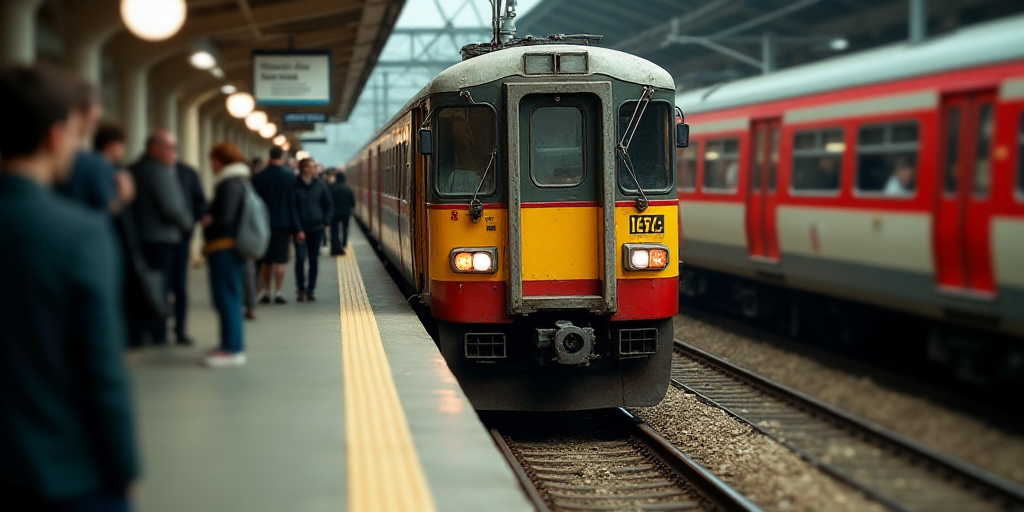Project Overview and Investment
The Mexican federal government plans to invest 7,777 million pesos in constructing a multimodal cargo terminal in Cancún, as outlined in the Manifestation of Impact on the Environment (MIA) submitted for authorization to the Secretariat of Environment and Natural Resources.
The project will occupy 261 hectares, owned by the Quintana Roo government. Of these, 259.5 hectares will require the removal of medium-sized subperennial evergreen forest vegetation for the project’s construction, according to the MIA.
Location and Facilities
The terminal will be situated at kilometer 841 of the Tren Maya railway line, 8 kilometers eastward towards Cancun International Airport. It will include a hazardous waste storage area, accommodation for National Guard and crew members, a tetra antenna, customs building or inspected area, weigh bridge, public track storage, electrical station, fire station, locomotive maintenance workshop, landscaping, administrative office, maneuvering yard, wastewater treatment plant (WTTP), potabilization plant, intermodal platform, conservation area, locomotive maintenance workshop, roadway with sidewalk and curb, fuel supply zone, and locomotive washing area.
Cargo System
The Cancun terminal will be part of a cargo system comprising 10 service stations, including Poxilá (approx. 4,812 million pesos), Progreso (5,158.48 mdp), Chetumal (5,047.98 mdp), and Palenque (4,934.70 mdp). These intermodal terminals will include receiving and dispatch tracks, classification tracks, public and intermodal tracks, transfer platform, temporary storage areas, administrative buildings, maintenance workshops, inspected areas, and National Guard detachments.
The remaining stations will only be operational yards, located in Valladolid (1,451.80 mdp), Pomuch (1,146.63 mdp), Xpujil (1,133.32 mdp), Escárcega (1,452.70 mdp), and Tulum (154.85 mdp). These yards will have public tracks, transfer platform, temporary storage areas, administrative buildings, and National Guard detachments.
Adjacent Construction
Additionally, a 14-kilometer turbine pipeline will be built in Cancun, featuring pump rooms and control systems, three storage tanks, and turbine fuel, gasoline, and diesel loading facilities.
This infrastructure will supply cargo containers from the train directly to the Cancun airport’s turbine fuel storage system, the second busiest in the country. Moreover, there will be extensions of the train with four branches connecting Puerto Progreso to the railway:
- 35.2 km libramiento Hunucmá to Progreso
- 13.5 km Poxilá to Hunucmá
- 18 km Poxilá to Mérida
- 7.5 km within Progreso Port
Impact and Necessity
These complementary works were announced on December 30, 2024, during President Claudia Sheinbaum’s morning press conference. Commander Ricardo Vallejo from the Felipe Ángeles Engineering Group stated that Puerto Progreso in Yucatan, the primary cargo port in the Yucatan Peninsula, is already saturated as it transports fuel, bulk materials for cement plants, and even the entire northern production of beer to Mexico’s southeastern regions and abroad.
This congestion results in numerous bottlenecks and additional costs. The Tren Maya ring, connected to the Transisthmus and National Railway Network, will allow importing fuel from central Mexico, including refineries and even the north, as well as cement—previously transported through the port.
Key Questions and Answers
- What is the purpose of this project? The Tren Maya cargo terminal in Cancún aims to boost regional economic development and logistics efficiency while offering significant advantages over other transportation modes like road and air.
- What facilities will the terminal have? The terminal will include a hazardous waste storage area, accommodation for National Guard and crew members, customs building or inspected area, weigh bridge, public track storage, electrical station, fire station, locomotive maintenance workshop, landscaping, administrative office, maneuvering yard, wastewater treatment plant (WTTP), potabilization plant, intermodal platform, conservation area, locomotive maintenance workshop, roadway with sidewalk and curb, fuel supply zone, and locomotive washing area.
- How many service stations are part of this project? There will be 10 intermodal cargo terminals, including Poxilá, Progreso, Chetumal, and Palenque.
- What are the complementary works being constructed? A 14-kilometer turbine pipeline, along with extensions of the train connecting Puerto Progreso to the railway via four branches, will be built.
- Why is this project necessary? Puerto Progreso, the primary cargo port in the Yucatan Peninsula, is saturated due to transporting fuel, bulk materials for cement plants, and northern beer production to Mexico’s southeastern regions and abroad. The Tren Maya ring aims to alleviate these congestion issues by importing fuel and cement more efficiently.






